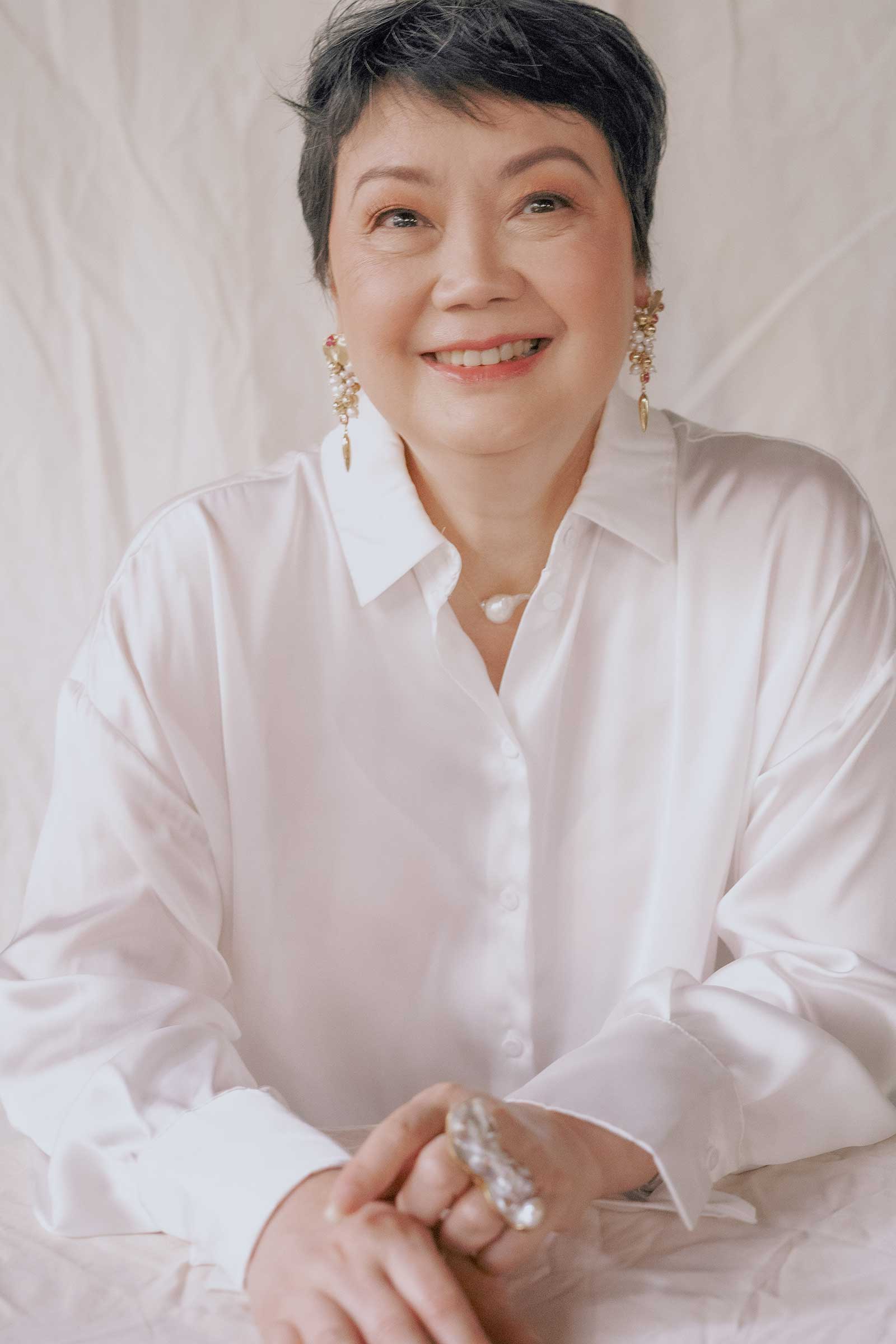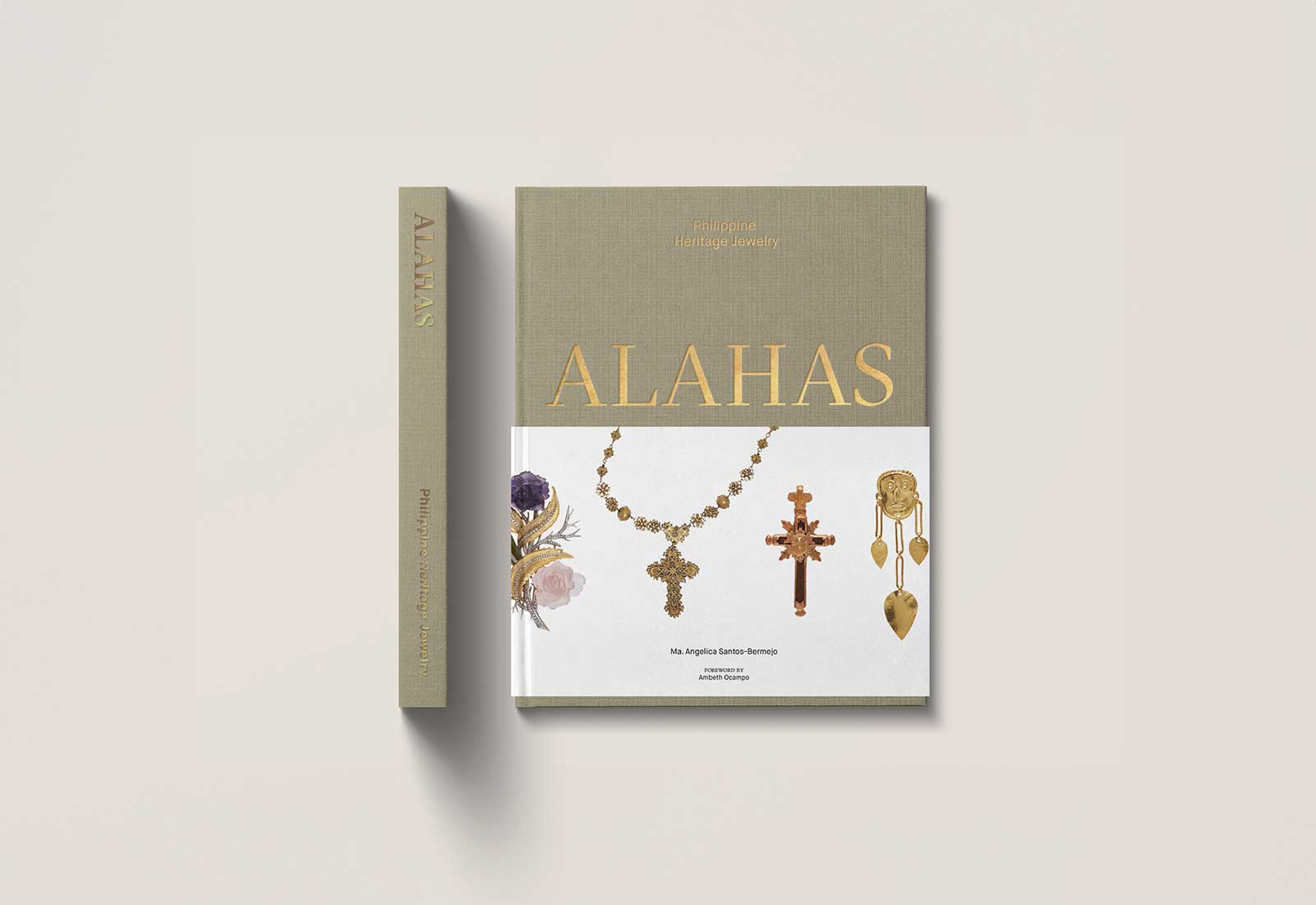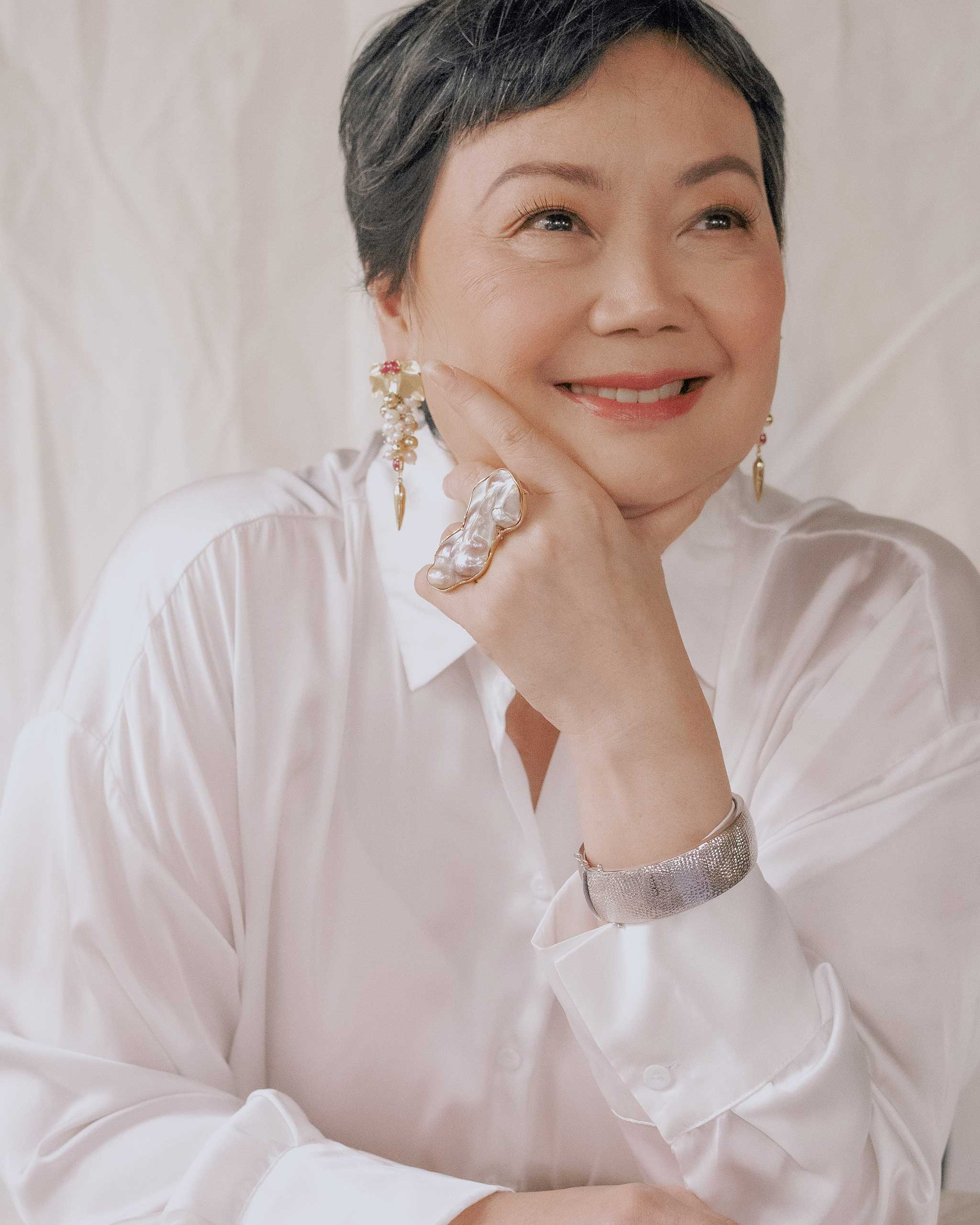Photos courtesy of Alahas Book
In February, a new book and exhibit on Philippine heritage jewelry was launched in Manila. Alahas is the product of author Maria Angelica Santos-Bermejo’s life’s work collecting antiques and jewelry for almost 40 years.
The book features intimate pieces from her personal collection and original creations from her namesake jewelry brand, Maria Angelica, which has been running since 2015. Its founder, nicknamed Gigi, recalls how it all started while visiting antique stores with her husband: they were looking for furniture, yet, as she says, “my eyes would always go to the jewelry section.”
Since then, she has acquired pieces through decades of hunting and research. From shopping in the side streets of Quiapo, visiting antique shops around the Philippines, to getting calls on discoveries from archeological digs, Gigi then takes on meticulous authentication legwork such as cross-referencing old catalogs and books or consulting with plateros (jewelers) and other collectors.

It would be easier to sell or collect brand new, but heritage is at the heart of Gigi’s work. “I’m selling something of value that’s one-of-a-kind, that you’re not going to get in any other store, that has all the story, character, and meaning behind it.”
This labor of love is translated to Alahas. Its 362 pages and 290 photos are a rich retrospective, linking each piece of jewelry to its era–what the dominant style says about the time, who wore it, or how it was worn. “The context matters,” reinforces Kara Bermejo, Gigi’s eldest daughter and collaborator. Although catalog-like in its historical precision, the inclusion of illustrations, essays, and poems from Filipino artists lend it the feel of a family album. Indeed a family affair in itself, the book was designed by Kara and her husband, Tomas de Cárcer. Kara also collaborated on the last chapter’s Mata Mata jewelry collection while Tomas illustrated places and people representative of each era.

Alahas situates the evolution of Philippine jewelry in the context of the region (such as Northern Luzon) and the period (from pre-colonial times, the Spanish and American occupation, to the contemporary age). A chapter on pre-colonial Philippines gives a peek into an economy rich with gold, a culture that practiced burying the dead with their belongings, and the highly-skilled work of local goldsmiths. For the Spanish colonial period, three signature accessories are highlighted: criolla earrings, the tamborin necklace, and the peineta (comb). (If you’re unfamiliar with these terms, the book also has a glossary.)
Alahas allows access to pieces that otherwise would be confined to coffins, closets, and museums. I discovered images of inverted crosses (intended to hang upside down so that when a priest reached to kiss it, it would face him upright) and criolla earrings which included human hair and were worn specifically for mourning.

Societal shifts are also tackled during the turn of the century where diamonds signaled a departure from gold and motifs like butterflies and nature reflected a resistance to the rise of machinery. The book concludes with an eye towards the future–presenting pieces inspired by the Cordillera region and Mountain province, updated with practical designs that allow ease of movement.
In revisiting the past, the book also shows surprising similarities to the present. A featured akosan belt from Bontoc reminded me of a fanny pack. The belt had a cotton pouch and could include decorative add-ons like shells, bones, and beads; this type of storage belt was worn by Cordilleran tribes to secure heirloom jewels on-the-go.

A deep respect for the craft and a yearning for its continuity is what drove Gigi to put Alahas together in the first place. While her work entailed extensive research, through this book, she can pass on a solid reference for future Philippine jewelers. “There’s the story that our forebears went through to get us to where we are today… hopefully by their good efforts and wrong deeds, we could probably learn more about who we are.”
The ALAHAS exhibit runs until March 17 in Unit 202, JJ Acuña/Bespoke Studio, Comuna Bldg. A, 238 Pablo Ocampo Sr. Ext., Makati City.
